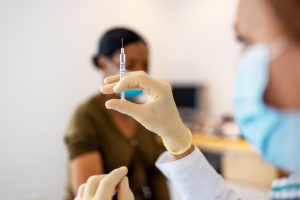Evidence Based Guidelines and Recommendations
Clinicians and healthcare facilities rely upon the publication and availability of evidence-based clinical guidelines and recommendations to guide modern-day medical treatment. These guidelines must be specific to the clinical practice setting, such as hospitals, long-term care facilities, or ambulatory surgery centers, and contain practical approaches to reducing the incidence of Healthcare-Associated Infections. The following resources will aid healthcare professionals with accessing the most current evidence-based clinical guidance and also outline the development pathway for guidelines, guidance statements, and other clinical recommendations.
![GettyImages-472389833 [Converted]](https://www.owens-minor.com/wp-content/uploads/2022/01/GettyImages-472389833-Converted-295x300.jpg)
The following section contains CDC produced guidance on important topics of concern related to the clinical workforce and also how to address specific situations such as patient deaths during pandemics, return to work criteria, and the use of laboratory methodologies for surveillance screening and laboratory confirmation of potentially infectious pathogens.
Centers for Disease Control and Prevention
Regulatory and Accreditation
Healthcare Facilities such as hospitals or ambulatory surgery centers may seek voluntary independent accreditation by outside agencies such as The Joint Commission or DNV. These agencies have deemed authority on behalf of the Center for Medicare and Medicaid services to inspect healthcare facilities and ensure that they are compliant with all established guidelines and regulations. Several accreditation bodies are available in the United States with The Joint Commission and DNV primarily serving inpatient hospitals and AAAHC responsible for accrediting ambulatory surgery centers. These independent accreditations provide an extra level of patient safety and are critically important during surge situations such as pandemics.
















